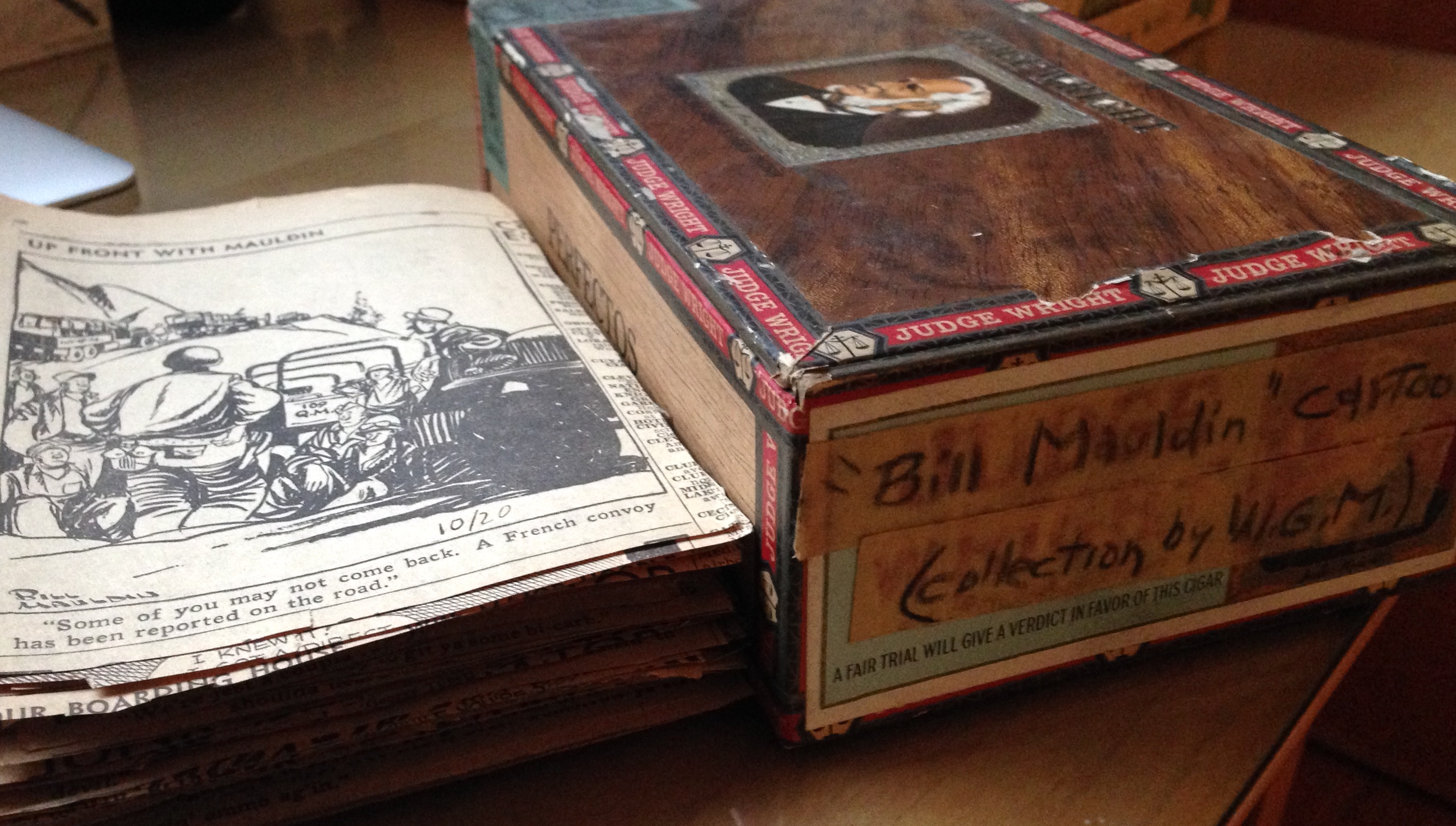“No war is easy for those who fight it”
In war, “you don’t become a killer. No normal man who has smelled and associated with death ever wants to see any more of it,” wrote cartoonist Bill Mauldin (1921-2003) in his book Up Front: “The surest way to become a pacifist is to join the infantry.”[1] His cartoons contained few feats of heroism. Instead, his central characters Willie and Joe griped about the weather, the rations, and their superiors.

Mauldin observed,
I don’t make the infantryman look noble, because he couldn’t look noble even if he tried. Still there is a certain nobility and dignity in combat soldiers and medical aid men with dirt in their ears. They are rough and their language gets coarse because they live a life stripped of convention and niceties. Their nobility and dignity come from the way they live unselfishly and risk their lives to help each other. They are normal people who have been put where they are, and whose actions and feelings have been molded by their circumstances.[2]
Like war correspondent Ernie Pyle, Mauldin gave GIs on the front in World War II both their dignity and a recognizable image of themselves. His cartoons balanced realism and respect for the combat soldier with humor and a healthy dose of cynicism. Pyle himself played an important role in bringing Mauldin’s work to a wider audience. In January 1944 he wrote, “Mauldin’s cartoons aren’t about training-camp life, which you at home are best acquainted with. They are about the men in the line – the tiny percentage of our vast army who are actually up there in that other world doing the dying. His cartoons are about the war.”[3] As a result of this coverage, his series Up Front was syndicated in papers across the nation.[4]
I first encountered Mauldin’s work in that form. When my mom moved to a new house a couple years ago, among the boxes we discovered one that her parents had kept for her when they moved decades earlier. It contained an old cigar box labeled “Bill Mauldin Cartoons (Collected by W.G.M.)” with over 200 newspaper clippings that my great-grandfather had cut from The Cleveland Press during the war and its aftermath. I don’t know why he kept them. His son, my great-uncle, had fought in the Italian campaign (as did Mauldin), so perhaps that connection had something to do with it. Or perhaps, like so many other Americans, he saw in them something of the realities of a war taking place thousands of miles away.
These drawings are not part of military history as we often conceive it – of generals, battles, strategies, weaponry, or even ideology. Rather, Mauldin’s work is part of the social history of wars – of what it felt like to be there – perhaps something those who have not experienced can never truly understand. Despite all his attempts to explain the lived reality of war through both words and drawings, Mauldin reflected, “I guess you have to go through it to understand its horror. You can’t understand it by reading magazines or newspapers or by looking at pictures or by going to newsreels. You have to smell it and feel it all around you until you can’t imagine what it used to be like when you walked on a sidewalk or tossed clubs up into horse chestnut trees or fished for perch or when you did anything at all without a pack, a rifle, and a bunch of grenades.”[5]

The perceived distance from ordinary life and the lack of understanding among ordinary people for the horrors of war may have contributed to Mauldin’s disillusionment upon returning home. Like many other veterans, he and his characters, Willie and Joe, struggled to fit back into civilian life. In their final appearance, they are “under a culvert” living “on the bum,” “totally out of luck, out of money”.[6] Despite his own troubles, Mauldin himself never stopped standing up for the Willies and Joes of the world and the respect and fair treatment they deserved.
Title quote from: Bill Mauldin, Up Front (New York: Henry Holt & Company, 1945), p.202.
[1] Mauldin, Up Front, p.14
[2] Mauldin, Up Front, pp.14-15
[3] Ernie Pyle, “Bill Mauldin, Cartoonist”, Jan. 15, 1944: http://mediaschool.indiana.edu/erniepyle/1944/01/15/bill-mauldin-cartoonist/
[4] Todd DePastino, Bill Mauldin: A Life Up Front (New York: W.W. Norton & Company, 2008), pp.126-9.
[5] Mauldin, Up Front, p.130
[6] Bill Mauldin in a 1983 interview, in Studs Terkel, The Good War: An Oral History of World War Two (New York: Ballantine Books, 1984), p.360.

2 thoughts on ““No war is easy for those who fight it””
I also have found collections of cartoons and such from WWll in my own family. I also have spoken with other people who have these collections in their families. I think clipping and keeping these item was a common thing. My mother had almost a hundred complete newspapers covering major events in WWll.
Interesting. It’s good to know it was a fairly common phenomenon. The images themselves must’ve really had something that appealed to people and what they wanted to remember.